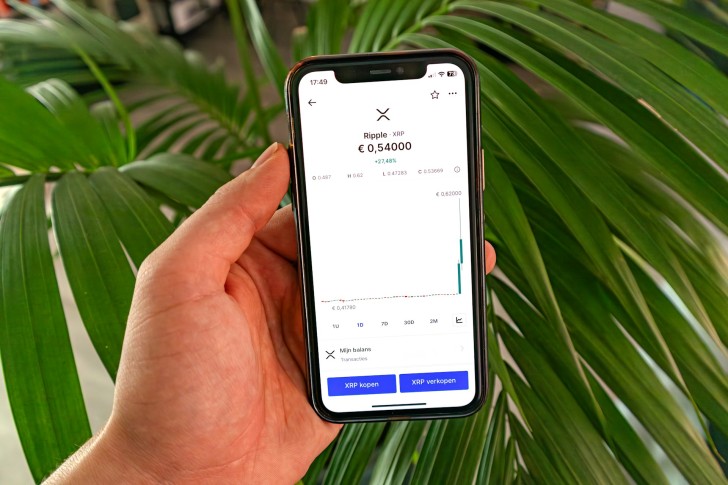Why is it high time to change cross-border payment?
Nowadays, it is difficult to transact money across borders, from one country to another. Imagine a business transaction between two institutions of two countries, the transfer will pass through several correspondent banks with multiple fees and charges in between, taking time to verify the payment. It might take many days and cost much more by the time the payment is done. These inefficiencies are more troublesome for those businesses that rely on quick transaction flow, or for families that send remittances abroad.
How Ripple utilizes XRP for cross-border transactions
Ripple has developed a payment network called RippleNet, allowing financial institutions to connect to each other directly for faster money transactions. XRP is used as a bridge currency between financial institutions within this network. Here’s how it works practically,
- The local currency of a bank is turned into XRP by the bank of a country
- Across Ripple network, they transfer the XRP instantly
- The XRP is converted into the destination currency on the receiver side
With this process, there is no need to hold foreign currencies in different accounts worldwide. It reduces the cost and the risk for banks. However, the effectiveness of this system is highly variable and depends on the price and stability of the XRP.
How Important is XRP or Ripple Price
In order for XRP to succeed as a bridge currency, there are three factors related to XRP price that matter.
- Liquidity: Generally, a higher Ripple price refers to a larger market capitalization, attracting more trading activity. Without causing price swings, bigger transactions are allowed for by more liquidity. This stability is crucial for banks that are moving millions of dollars.
- Trust and adoption: Financial institutions trust Ripple prices that are stable. Extremely volatile Ripple price makes businesses hesitant to use it. Because they don’t want the risk of losing value during transactions.
- Transaction Cost: Ripple transaction costs are already cheaper than traditional methods. But as the XRP value grows, per transfer, it needs less tokens, which make the system more efficient.
So to say, if the Ripple price is healthy and stable, its case as a global settlement tool becomes stronger.
Ripple Price Affecting Global Adoption
For banks and fintech companies to adopt Ripple's payment solution, it depends on XRP’s performance in the market. If the price is too high or too low, the appeal of Ripple’s XRP gets limited. Institutions want a risk free reliable system.
On the contrary, a steadiness in the rise of the Ripple price, along with steadily increasing liquidity, both indicate confidence in the market. This encourages banks to adopt Ripple’s service for everyday payments across borders. Financial institutions in Asia, the Middle East and Europe have already partnered with Ripple. However, a broader spread of Ripple is likely dependent on its market stability.
Competition and Challenges that Ripple Faces
Ripple definitely has competitions in the market. USDC and USDT, also central bank digital currencies (CBDCs), are some stablecoins that are being developed to work as alternatives in money transactions across borders. Since their value is tied to fiat currencies, these are the assets that are designed to reduce the concerns of volatility.
However, Ripple’s advantage is its speed, along with its proven technology. Institutions adopt Ripple swiftly. Depending on Ripple price’s strength and stability, it will continue to compete in the crowded international currency markets.
Ripple in the Future of Cross-Border Payments
As we look ahead, several factors will be influencing Ripple and its cross border transactions. The factors can be:
- Clear rules and regulations. Understandable and specific rules in the cryptocurrency world makes it easier for institutions to adopt Ripple.
- Market performance also matters. Ripple’s credibility is boosted by a stable and a liquid market.
- The factor of global partnership makes a difference. With more fintechs and banks joining the Ripple Network, the effect of the strong network will make Ripple’s XRP more valuable and useful.
Ripple price is ultimately not only about investor profits, it is also about structuring a new global infrastructure. If XRP adds value and maintains stability, how money is transferred across borders may really be shaped by Ripple.
Closing Remarks
Cross border payments are no longer held off due to disruption, and Ripple has been the leader for this remarkable transformation in international transactions. The price of Ripple and XRP plays a significant role in this transformational journey, working as a component of trust. Though there are challenges from competitors and regulators, there is an edge given to the game by Ripple’s unique approach. Ripple’s XRP needs to achieve the stability and strength to work as the bridge of future currency transactions. Only that will determine the future of global payments.
 Editorial staff
Editorial staff

 Editorial staff
Editorial staff


